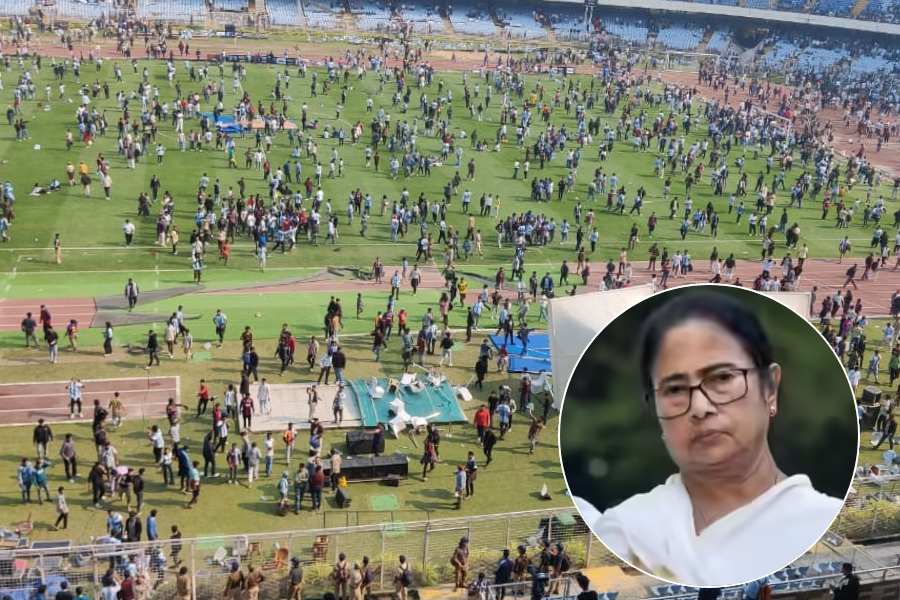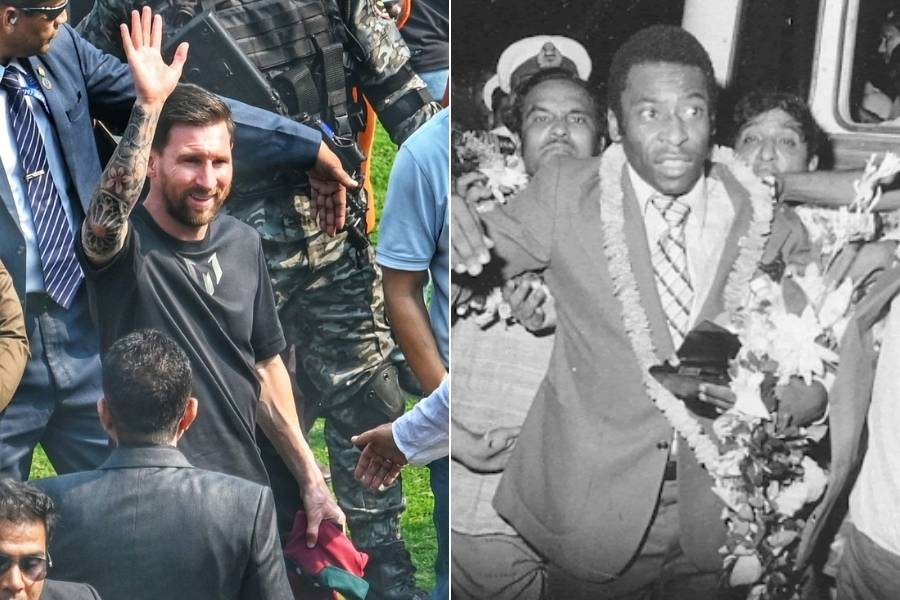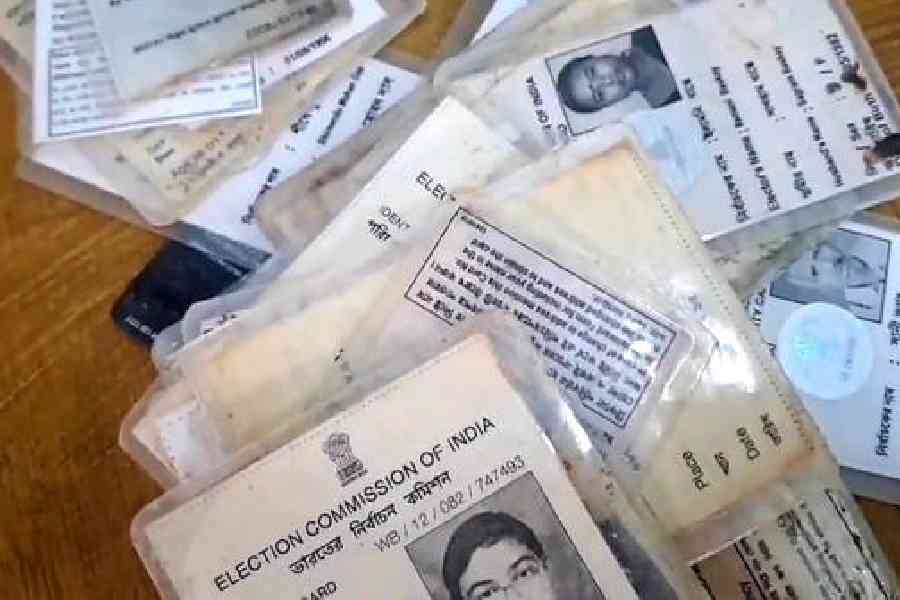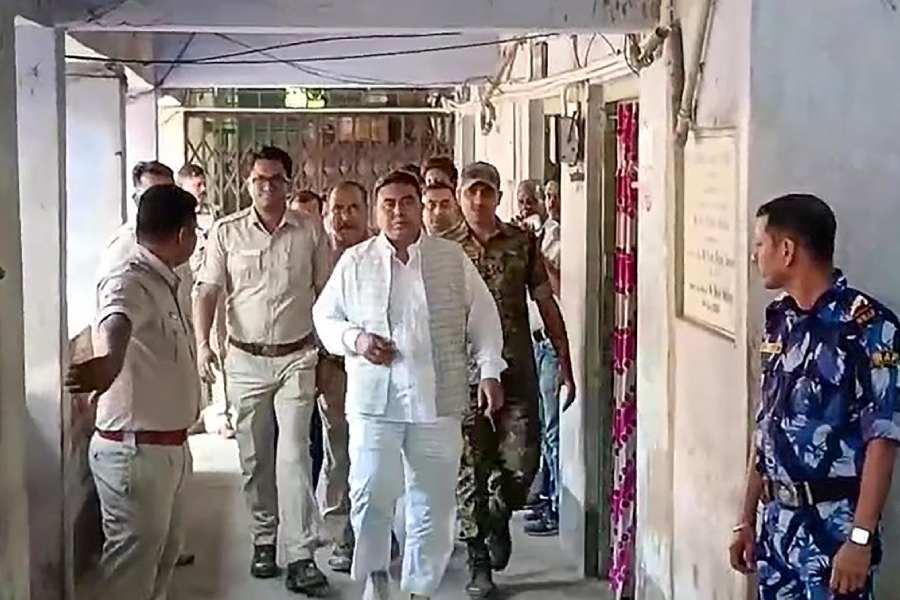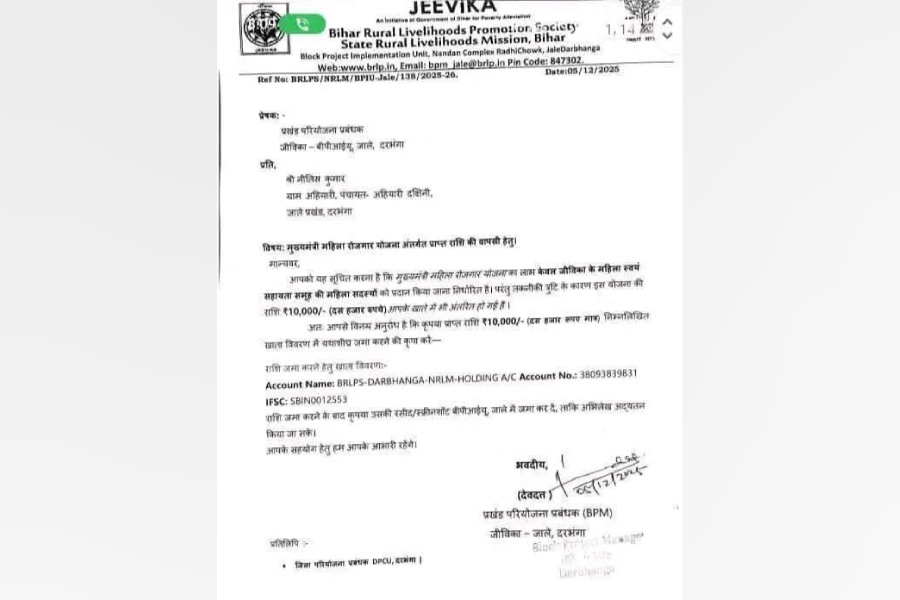 |
| Child artiste Saswata Chatterjee as boy Rabindranath |
He is finally at peace, having dispatched Jeevan Smriti, his 76-minute documentary on Rabindranath Tagore, to the ministry of culture. Now, Rituparno Ghosh is training his sights on a feature film on the Thakurbari women. A t2 chat...
You have been preparing to make Jeevan Smriti (Selective Memories) for over a year. How would you describe this documentary and your journey?
I have never had to work so hard on my feature films! I never had the discipline to do documentaries. I am basically a storyteller and while making this documentary I felt that I didn’t have to shift from that point. Gathering information on Rabindranath and authenticating its validity, there’s already a wealth of material out there. Prashanta Pal’s Rabi Jiboni is a very important work. Also, Prabhat Kumar Mukhopadhyay’s biography. These were all authorities on Rabindranath and I didn’t feel I needed to add any new information on him. When I am connecting with Rabindranath, it is on a personal level. The interesting thing is that for Satyajit Ray (who made the documentary Rabindranath Tagore in 1961), Rabindranath was memory. Ray had interacted with Rabindranath. But for me, Rabindranath is history. His contemporaneity with Rabindranath was also an obstacle for Ray. That is why his documentary feels objective to me... as if he forcibly detached himself from Rabindranath….
Picking and choosing aspects of Rabindranath’s life must have been hugely challenging. What did you want as the line of thought in the documentary?
What we have here is not what I had set out to do. My priorities changed while making the film and I think the end product is better than what I had planned. I was still reading up on Tagore voraciously and incorporating changes in the script almost every day. I told the ministry that the film was taking a life of its own…. What finally emerges is a lonely traveller. Even at the end of his life, Rabindranath had the ability to be surprised, a quality we have almost lost. I did not start out with this line of thought but that’s where we reached…. He was a loner in the midst of everything. Maybe it was there in his subconscious even though he had spread out his life in so many directions.
Look, whenever you do a documentary, there will always be a what-did-you-leave-out brigade. Rabindranath’s Jiban Smriti literally translates as ‘reminiscences’. I am calling my documentary Selective Memories. It’s because Rabindranath too never felt he had the responsibility to transcribe his whole life, chronologically with every detail. It’s not photography but impressions. That is how Rabindranath understood it. By the time he was writing Jiban Smriti, so many of his loved ones had died. Daughters Madhurilata and Renuka, son Samindranath, wife Mrinalini.… And to think that he was only writing about Kadambari’s death! There is no mention of his marital life either. He also wrote on his journeys to Russia and Japan. There was a lot of material that he had already written and didn’t feel it necessary to include in a memoir. I too didn’t feel I had to track his life like a biography.
 |
| Samadarshi as Rabindranath in his 20s |
And when did you think of developing it into a feature film?
There’s a lot of research on Rabindranath that I have already done for the documentary, there are a lot of books around me. I am still with the subject… so I thought this would be the best time to make a film on this subject, if I had to do one. I no longer want to make films that don’t need me to read and research, films that don’t enrich me in any way. Just another Titli or Utsab, I don’t want to make anymore. When I made The Last Lear, I had read King Lear under Samik Bandopadhyay’s guidance. I read up extensively on Binodini when I made Abohoman. While making Chitrangada, I had to study the medical processes of gender reassignment and also the Mahabharata…. I still consider myself a student. What I learn from the making of a film is vital to me.
What’s the germ of the idea for the film? How is it going to be different from Jeevan Smriti?
Thakurbari fascinates me. They were a clan of ostracised Brahmins from Jessore who migrated to Calcutta and set up home in Jorasanko. And since they did not belong to their community anymore, they did not have any social responsibility as such. They had an inner freedom, they experimented with a lot of things which became milestones. If you see in the context of their times, neither Jyotirindranath nor Rabindranath had a mistress. Because it all happens within the family…. Mallika Sengupta’s Kobir Bouthan talks about the relationships between the men and women in the Tagore household.... Actually Sunil Gangopadhyay’s Prothom Alo was my main inspiration. And then I read the memoirs of Indira Devi and Sarala Devi.
The feature film would span Dwarkanath’s death to Kadambari’s death, so roughly from the 1840s to 1880s. The focus would be on the women, how they adapted to this change. They were a Hindu family that embraced Brahmoism. The women would go out, drape their saris differently and appreciate literature. I want to call the film Nashta Neer. As an alternative, I am thinking of 6 No. Dwarkanath Thakur Lane (smiles)….
The women of Thakurbari had the freedom of self-expression. They didn’t feel they had to accept the man that destiny had chosen as their husband. They didn’t think that they couldn’t have a relationship with other men. Besides, Gyanadanandini and Kadambari were not typical housewives. They had a largely lonely life. What would they do with it? Gyanadanandini had kids very early on in her marriage, Kadambari didn’t have any kids. And when his mother died, Kadambari was protective of Rabindranath like a mother.
Most people would be dying to know if Rabindranath and Kadambari had indeed shared something more than just emotional intimacy.
No one knows what exactly there was between them. But if you look at Rabindranath’s works, there is ample evidence all around. For instance, Ghare Baire, which mirrored the relationship between Satyendranath, Gyanadanandini and Jyotirindranath. And Nashta Neer was about his, Kadambari and Jyotirindranath’s relationship. Rabindranath was writing about his own family in his fiction, that is why you don’t need other biographical evidence for it.
I wanted Sunilda (Gangopadhyay) to co-write the film and I am still hoping that he would! You know, this documentary gave me the courage to think that someone can be dressed as Rabindranath. There has been no film on Rabindranath in Bengali, even though we have had actors playing personalities like Rammohun Roy, Vidyasagar, Swami Vivekananda, Chaitanya or Michael Madhusudan. All of them have been seen on screen, except Rabindranath. There was a film on Dada Thakur when he was alive. There is a school of biopic in Bengali cinema which is not (Richard Attenborough’s) Gandhi… it’s more Amar Chitra Katha.
 |
| Sanjoy Nag as the Bard in middle age |
What kind of casting do you have in mind?
There’s Samadarshi as Rabindranath, Raima (Sen) as Kadambari and Anirban Ghosh as Debendranath, straight from the documentary. I have thought of Jisshu (Sengupta) as Jyotirindranath and Koel (Mallick) as Gyanadanandini.
Did you think of Koel after watching Hemlock Society?
No, I haven’t seen Hemlock Society. I had seen her in Jackpot. Actually Ranjitda (Mallick, Koel’s father) has long wanted me to do a film with her. And Koel’s features are a lot like Gyanadanandini’s. She has a sharp nose like Gyanadanandini.
Coming back to Selective Memories, when will it be out for public viewing?
Well, we have submitted the film to the ministry. Now it’s up to them to show. Personally, I am waiting for Shyambabu (Benegal) to watch it. He’s the one who wanted me to make this documentary.
Reshmi Sengupta
What are your expectations from Rituparno’s Tagore documentary Jeevan Smriti? Tell t2@abp.in


